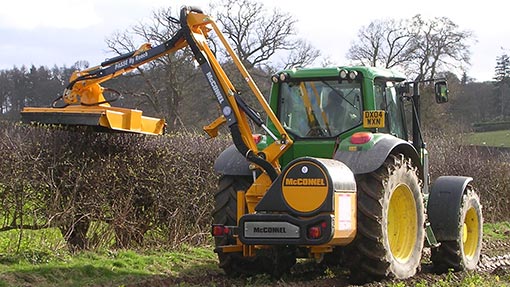Time to review badger cull in TB eradication plan

October 4th, 2019
Earlier this week, the Irish Farmers’ Association appeared before the Oireachtas Committee on Agriculture to discuss bovine tuberculosis (TB) and the state’s programme that seeks to eradicate the disease.
Speaking on behalf of the representative body, beef farmer Pat Farrell said that the management of wildlife susceptible to TB – namely badger and deer – is “vital in eradicating the disease from the country” and must remain a key part of an enhanced TB programme.
He said that TB outbreaks have “been all too common” as a result of wildlife disturbance, calling for badger density reduction – i.e. culling – to remain the “primary focus” of the wildlife unit in the Department of Agriculture (DAFM).
The badger, together with our deer population, is often blamed for problems with bovine TB that is costing both the State and farmers millions every year to tackle.
Yet, despite the oft-floated idea that badgers are the prime cause of spikes in TB levels, is the protected species really the problem or just a scapegoat, paying the price in the thousands every year?

Chicken and egg scenario
Evidence from the UK’s eradication programme indicates that while there is a link between TB in badgers and TB in cattle, it is “not yet established, with certainty, how the disease is spread between them”.
Mike Rendle, the co-ordinator for the Northern Ireland Badger Group, says the fact that badgers and cattle share the same TB strains is not by itself “evidence of
He points to a TB surveillance project conducted in Cumbria last year that found 40 the 602 badgers culled in Cumbria, together with 31 cattle herds sampled, were infected with a bovine TB stain not seen in the area before.
The cattle and badgers were infected with M.bovis 17z, a strain that the UK’s Department for Environment, Food & Rural Affairs (DEFRA) traced back to cattle imports from Northern Ireland. A wider UK analysis carried out in 2017 found that the Northern Irish strain was transmitted from cattle to badgers.
These findings, Rendle says, clearly shows that the distribution of bovine TB strains can result from cattle movements spreading TB and infecting local badger populations.
Instead of focusing on culling, Rendle says that the Irish government should look to measures at the farm level, pointing to the fall in bovine TB in the early 2000s following the introduction of enhanced cattle testing and controls under the Programme for Prosperity and Fairness (PPF).
This drop, he says, was preceded by an increase in cattle testing, while cases increased in the UK around the same time following a suspension of herd testing.
Badger culling was not officially introduced into the Irish eradication strategy until 2004, and, to date, Rendle says, there is no direct evidence of any association between TB rates and badger culling.
“[TB] attributions to badgers are usually based on the reported presence of badgers near farms, not empirical evidence of local badger to cattle infection,” he says, with other measures such as on-farm surveillance and hygiene controls making the real difference.
Vaccination over culling
The Department of Agriculture (DAFM) has also pointed to vaccination as a more effective way of tackling TB in badger.
At the second meeting of the multi-stakeholder TB forum, Colm Forde, who works on DAFM’s bovine TB eradication programme, said the “science shows that vaccination will afford the same level of protection as on-going culling”.
The Department reiterated this stance when questioned on the issue by the IFA at subsequent meetings in February and March, stating that years of research across Ireland, involving thousands of badgers, have shown that vaccination is effective while culling on its own is not.
The Department outlined at the third meeting of the forum in November 2018 that the addition of vaccination to the programme will see the disease “eradicated” over a 60 to 90 year time period.
It said that additional cattle controls such as pre- and post-movement testing, risk based trading where farmers consider the TB history of the herd from which they are buying, and a focus on farms with the worst TB records would shorten the time to eradication.
Padraic Fogarty of the Irish Wildlife Trust, a member of the forum, said that large farming groups at the meetings appeared more interested in “blaming wildlife than actually taking the hard measures needed” to address on-farm TB rates.
Fogarty says that he was “shocked” at how the focus from farming groups was always on wildlife “despite the evidence presented to them”.
“We killed tens of thousands of [badgers] over the past decades and yet TB rates remain stubbornly high,” he says.
DAFM is currently revising the TB eradication strategy on the back of recommendations from the stakeholder forum. The new strategy is expected to be released later this year.
[x_author title=”About the Author”]






